Double Commander is a free and open source dual pane file manager. It is an excellent file manager, especially for those who prefer a consistent file manager experience, while trying out different Linux desktop environments. This article assists you with getting Double Commander installed and configured on your Linux system.
Each desktop environment ships with its own file manager: Nautilus on Gnome, Dolphin on KDE, Thunar on XFCE, etc. Working in the file manager forms and integral part of my daily PC work flow. Therefore I do not enjoy being forced to switch to a different file manager, each time I try out a different desktop environment on Linux. Additionally, I really enjoy dual pane file managers. If you recognize yourself in these file manager preferences, then I can highly recommend giving Double Commander a try.
Alexander Koblov develops and maintains Double Commander and he selected the Lazarus IDE for programming Double Commander. Here is an appetizer of what Double Commander on Linux looks like, while I am writing this article:
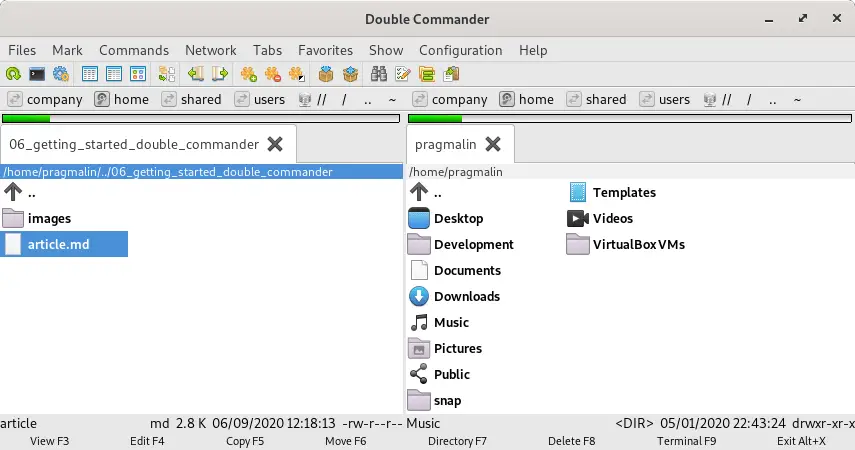
Note that Double Commander on supports both a horizontal and vertical layout of the panes. Additionally, each pane can have multiple tabs.
Installing Double Commander on Linux
I should mention that there are two different editions of the Double Commander program, before diving into the installation instructions. A GTK edition called doublecmd-gtk and a QT edition called doublecmd-qt. Both editions work exactly the same, they just have a slightly different feel to them, as they are built with a different graphical toolkit under the hood.
Which editions should you use? The desktop environment you installed on your Linux system determines the best Double Commander edition. For those that are working in the KDE or LXQt desktop environment, doublecmd-qt works best. In case you installed any other desktop environment (Gnome, Mate, XFCE, Cinnamon, etc.) then doublecmd-gtk works best. I write this article on my trusty Thinkpad T450s, which runs Debian 10 with the Gnome desktop environment. For this reason, the remainder of this article features the double-gtk edition.
In the event that you run the Debian or Ubuntu Linux distribution on your PC, you can install Double Commander with ease, because these distributions include the program in their package repositories. To install Double Commander, simply run the following command from the terminal:
sudo apt install doublecmd-gtk
In case you run Fedora, CentOS or openSUSE, the developer maintains a repository on OBS. openSUSE maintains the Open Build Services (OBS) platform and it enables anyone to build and host installation packages for multiple Linux distributions. This means that you can download the installation package for your Linux distribution, directly from the Double Commander repository on OBS. The download page provides detailed installation instructions.
For those that run an Arch based distributions, the Arch User Repository (AUR) is your friend. Simply search for doublecmd.
Configuring Double Commander on Linux
Because Double Commander is a generic file manager, it requires a little configuring to make it work with your desktop environment. Additionally, I prefer to change a few other settings to make Double Commander more to my personal liking. The following slide show presents these configuration steps:
Slide 1 – I prefer to edit files with the default editor of the installed desktop environment. In my case this is gedit. To edit a file, simply select it in a pane and press F4.
Slide 2 – Pressing F9 opens the terminal in the pane’s directory. A handy feature for those that often work in the terminal. For this feature to work, Double Commander just needs to know your preferred terminal program.
Slide 3 – After selecting two files, either in the same pane or in different panes, you can open these in a file diff program by selecting Files → Compare by Contents from the program menu. Alternatively, you can configure a hot key combination. I configured CTRL+ SHIFT+o.
Slide 4 – Everyone probably prefers different font types and sizes. I found the default font size a bit too big and replaced the monospace font type with hack. Feel free to adjust these settings to whatever works best for you.
Slide 5 – To reduce the busyness of the default program layout, I removed a few items. Experiment for yourself with which layout items you prefer or not.
Slide 6 – When multiple tabs are open in one pane, I missed the close button on the tab. After digging through the options, I found how to display and enable the close button for each tab.
Frequently used keyboard shortcuts
At this point you have Double Commander installed and configured on your Linux system. As a final part in this tutorial, I present you with frequently use keyboard shortcuts. Learning these keyboard shortcuts can drastically speed up your work in the file manager, compared to working with just your mouse.
Directory navigation
- Open the directory item that is highlighted in the pane: ENTER
- Navigate to the parent directory of the currently opened directory: Backspace
Basic operations
Note that most of these are also shown in the bottom bar on the program layout.
- Rename the currently selected file or directory: F2
- Open the currently selected file in the editor: F4
- Copy the selected files and directories from the active pane to the other pane: F5
- Move the selected files and directories from the active pane to the other pane: F6
- Create a new directory: F7
- Delete the selected files and directories: F8
- Open the terminal in the currently opened directory: F9
Pane navigation and tab control
- Shift focus to the other pane: TAB
- Create a new tab in the active pane: CTRL+T
- Close the current tab: CTRL+W
- Switch to the next tab in the current pane: CTRL+TAB
File and directory selection
- Select the currently highlighted file or directory: SPACE. You can select multiple items like this.
- Select all on the current tab: CTRL+A or CTRL+NUM+
- Unselect all on the current tab: CTRL+NUM-
- Invert the selection on the current tab: CTRL+NUM*
Hidden files
- Toggle show/hide of hidden system files: CTRL+.
Hopefully the information in this article enticed you to give Double Commander a try on your Linux system. This file manager offers many more features and customization options. With just a bit of tinkering and time investment from your side, you might end up with a file manager that improves your work flow. As a result you might even prefer it over the default file manager offered by your desktop environment. For me Double Commander is one of the first programs I install.

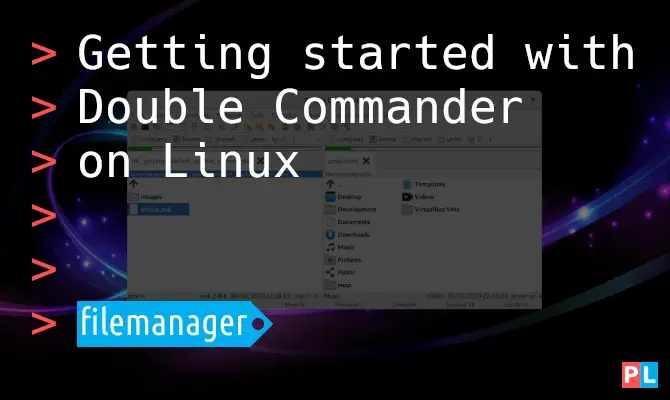
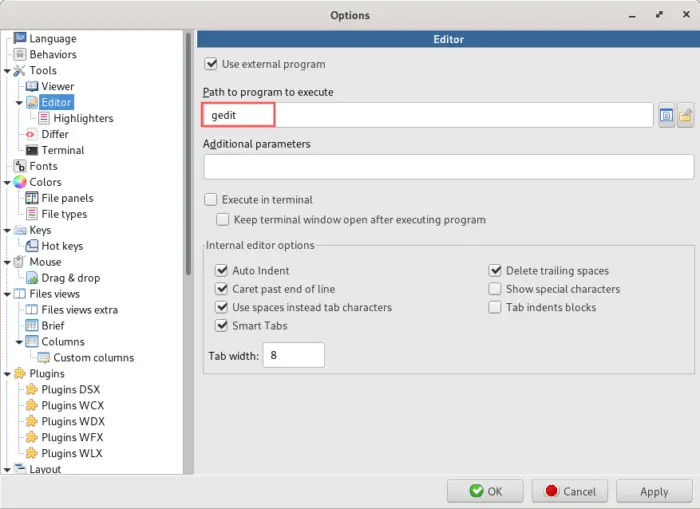
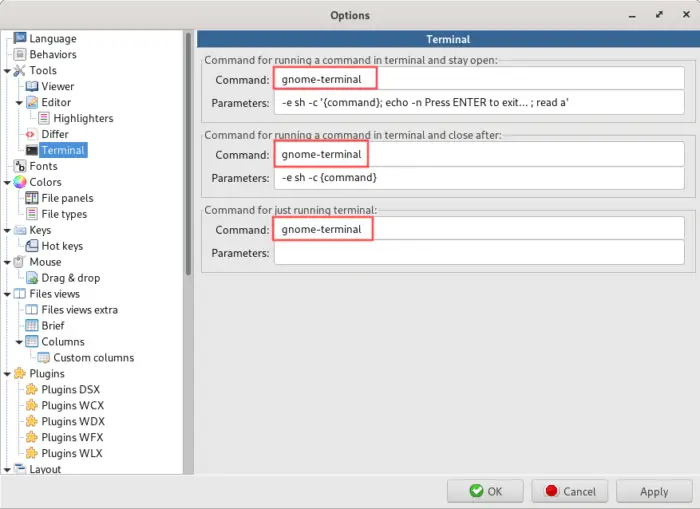
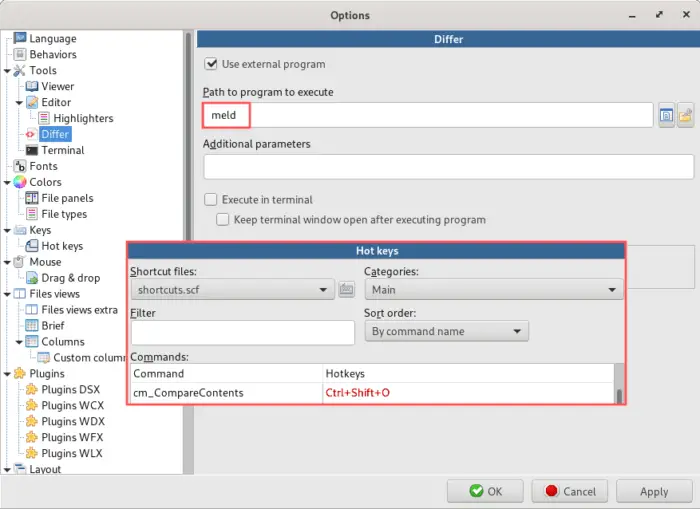
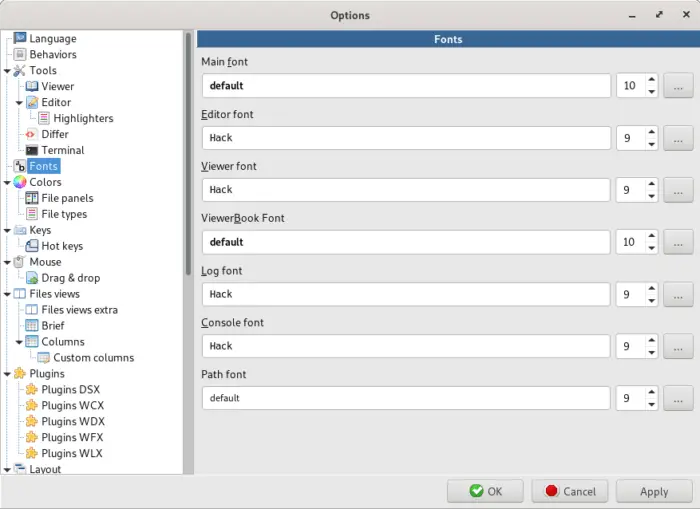
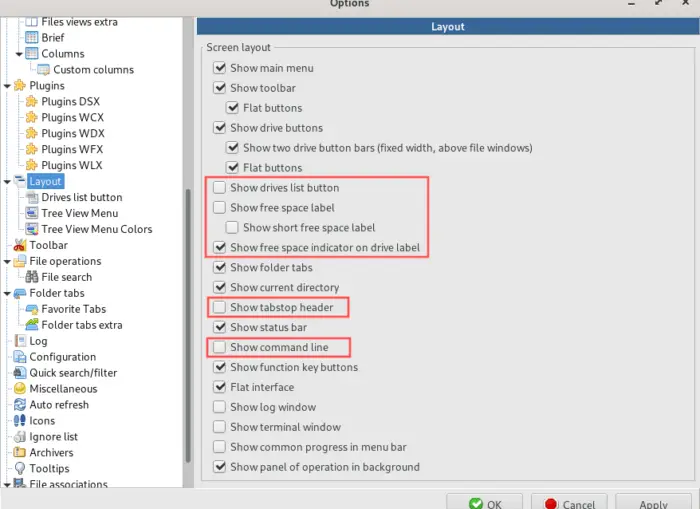
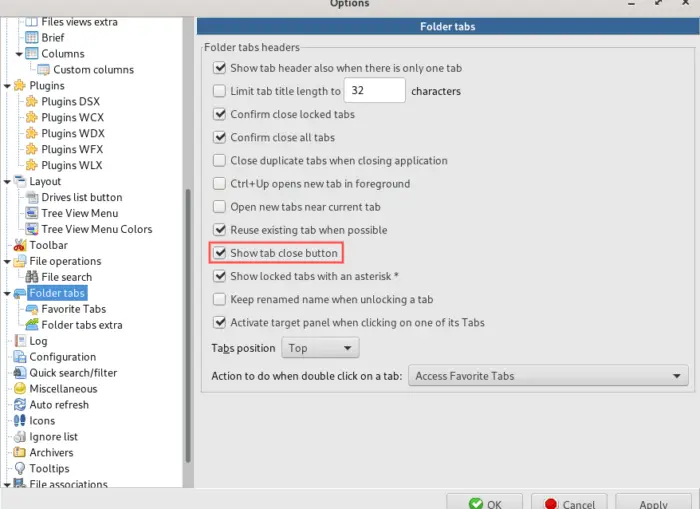
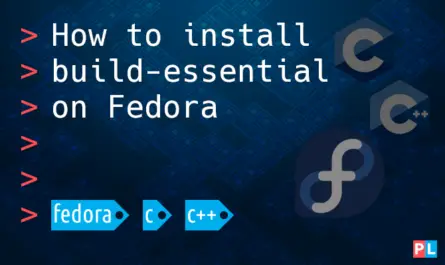
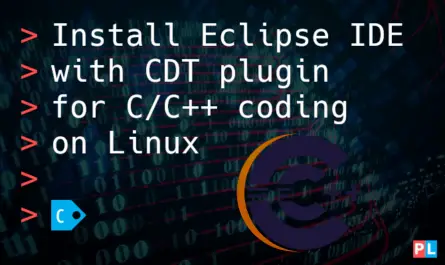
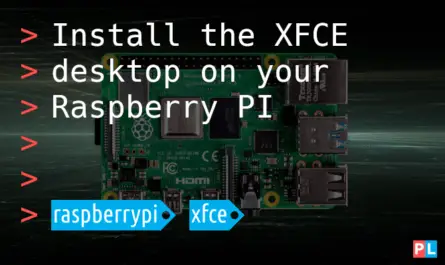
3 thoughts on “Getting started with Double Commander on Linux”
Comments are closed.